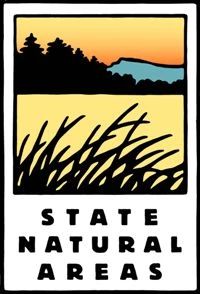Apostle Islands Critical Species
No. 269

This natural area in Lake Superior consists of units on Eagle and Gull Islands within the 21-island Apostle Islands archipelago. It was designated to recognize critical nesting areas for gulls and colonial waterbirds. The 28-acre Eagle Island unit has consistently provided nesting areas for herring gulls, double-crested cormorants and great blue herons. Gull Island is a small, flat, 3-acre rocky island devoid of mammalian predators. It is the most important gullery in the Apostles with regular nesting by herring and ring-billed gulls. The rocky terrain and the concentration of gulls on these islands have led to sporadic and weedy vegetation, composed of plants that can tolerate an altered environment. The absence of browsing deer has led to a densely vegetated shrub layer of red elder, mountain ash and mountain juneberry. Yarrow, pigweed, fireweed, hemp nettle, orange jewelweed and black bindweed are also common. The shallow reefs between Gull and Michigan islands provide important habitats for spawning lake trout. The islands are owned by the National Park Service and were designated a State Natural Area in 1992.
Location
Within the Apostle Islands National Lakeshore on Gull Island and Eagle Island, Ashland and Bayfield Counties. T51N-R1W, Section 2 (Gull Island). T52N –R5W, Section 31 (Eagle Island). 31 acres.
Driving directions
Public access is restricted during the bird nesting season (late May-September) and due to the sensitive nature of the site. Contact the National Park Service for more information about visiting this site: 715-779-3397.
Apostle Islands Critical Species is owned by: National Park Service
